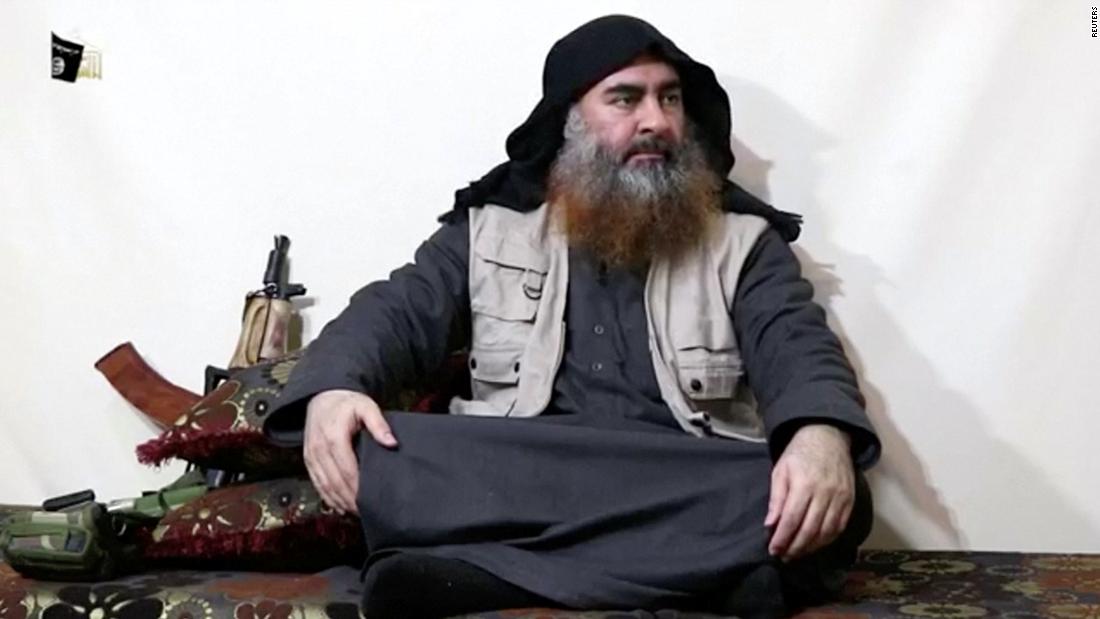[ad_1]
While ISIS may have a succession plan in place it is likely only known to a very small number of the organization’s senior leadership. The group has not publicly signaled who will take over. This means that whoever succeeds Baghdadi may have very little name recognition amongst jihadis worldwide. This may challenge ISIS’ ability to inspire global terror.
In removing Baghdadi from the battlefield, the United States has neutralized the threat from a man who was both ruthless and highly adept in running a clandestine terrorist organization. After he took over the leadership in 2010 of what was then-called the Islamic State of Iraq, Baghdadi rebuilt the group into a force that just a few years later took control of vast swathes of Syria and Iraq.
In announcing the death of Baghdadi, President Donald Trump declared he was the “world’s number one terrorist leader.” But for ISIS and its tens of thousands of followers globally, he was much more than that. Ever since Baghdadi was publicly presented as “caliph” by the group in the Great Mosque of al-Nuri in Mosul in July 2014, his followers have held him to be the supreme political and spiritual leader of all Muslims worldwide.
From the jihadi perspective, the entire legitimacy of the ISIS caliphate project rested on the notion that Baghdadi was a true “caliph” (divinely sanctioned ruler of all Muslims). While not all jihadis accepted this and the claim was bitterly contested by al-Qaeda, tens of thousands of jihadi extremists came to see Baghdadi as God’s anointed ruler on earth.
Baghdadi’s status allowed him to wield almost unfettered power over every aspect of life and death for those living in ISIS-controlled areas of Syria and Iraq. And after ISIS lost all its territorial holdings, his continued survival kept the flame alive for ISIS followers. For example, the group of extremists in Sri Lanka who launched devastating attacks on churches and hotels on Easter Sunday pledged allegiance to him.
There is another headache for ISIS in naming a successor. It is widely believed among jihadis that a “caliph” must have certain attributes and credentials. One is the requirement to be descended from the Prophet Mohammed’s Quraysh tribe. Another is the requirement to have significant knowledge of Islamic jurisprudence. Baghdadi was able to persuade followers he fit these requirements, but this narrows the pool of potential successors.
With Baghdadi gone there is a possibility ISIS may splinter. In recent years tensions have risen between different ideological factions within ISIS over the doctrine of Takfir (declaring Muslims to be disbelievers).
Al-Qaeda may eye an opportunity to reunify the global jihadi movement. Much of the acrimony between al-Qaeda and ISIS was embodied in a fierce war of words between al-Baghdadi and al-Qaeda leader Ayman al-Zawahiri, and with Baghdadi removed, al-Qaeda may move to heal divisions between the two groups.
According to Ali Soufan, a former FBI special agent who helped dismantle al-Qaeda networks, “The question now is how do al-Qaeda play this to their advantage. How will they try to bring ISIS fighters on board?”
A more immediate challenge for ISIS is confronting the intelligence failure which led to the location of their leader being compromised. This may result in recriminations and paranoia, further eroding the cohesiveness of the group. There was likely no more closely-held secret than the whereabouts of their top leader. After the “caliphate” began to crumble, ISIS’s other senior leaders are believed to have dispersed across the Syria/Iraq region to avoid being targeted, but they will not sleep easy now. A further serious problem for the group is the fact that according to Trump the US “took highly sensitive material and information from the raid [which killed Baghdadi], much having to do with ISIS, origins, future plans, things that we very much want.” The individuals captured during the raid may also give up information which may help to unravel the group.
In the days ahead there will be significant concern that ISIS’s followers around the world will seek to retaliate for Baghdadi’s death. Security agencies will need to be extra vigilant. In the medium term however the removal of Baghdadi will likely reduce the threat posed by ISIS by deflating its supporters, robbing it of legitimacy in jihadi circles and exposing rancor within the group.
However the ISIS threat will likely long outlive its leader. The group has been working to regenerate its operations in Iraq and Syria and its fighters and followers still have a significant presence in Afghanistan, Libya, West Africa, East Africa, Southeast Asia and many other parts of the world.
[ad_2]
Source link



